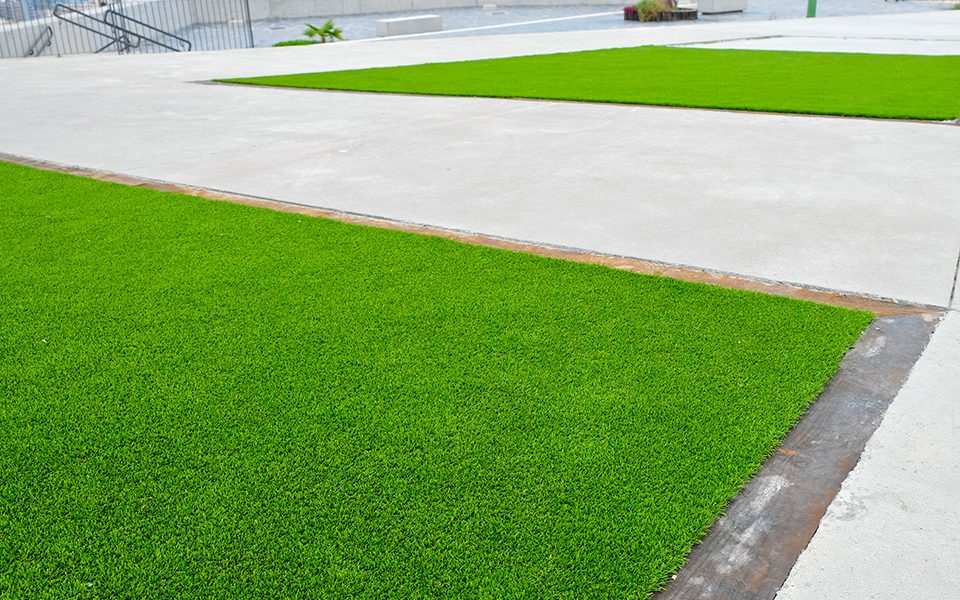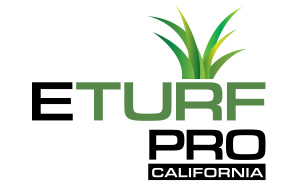Benefits of Laying Artificial Grass On Concrete
Many homeowners and potential buyers know how realistic and lush turf grass looks. Technology has significantly advanced synthetic grass’s appearance and maintenance needs, resulting in a growing interest in using turf grass for landscaping.
This is mainly because potential buyers and homeowners want an inviting and lush lawn that remains green without hours of watering fertilizing, edging, weeding, aerating, and mowing.
Artificial grass is versatile and provides the best solution for nearly any surface. It can replace natural turf on top of the soil. It can also be layered over patios and wooden decks or incorporated into natural turf for a blended effect.
Can I Install Artificial Grass On Concrete?
Besides transforming backyards and gardens, you can install artificial grass on concrete with sufficient drainage. Similarly, the wall’s integrity must be uncompromised, free from cracks and holes. Otherwise, the grass might collect water, resulting in mildew or mold.
Always ensure you repair any damages before installing artificial grass on concrete, including low spots, gaps, or cracks. Well-maintained concrete guarantees proper installation and prevents future complications. You can also consult a professional to guide you throughout the process, from buying to installation.
Benefits of Artificial Turf on concrete
There are multiple benefits to laying artificial grass on concrete surfaces. They include:
Simple and Affordable Installation
The secret to artificial grass’s longevity during installation is establishing a solid sub-base. Usually, this can be daunting since it demands back-breaking groundwork on uneven and weak surfaces before installing the artificial grass.
With standard turf grass installation, existing grass must first be removed using a turf cutter or by hand. Excavations then follow, and equal amounts of aggregates that will make up the sub-base are then taken to the garden using a wheelbarrow. All this is time-consuming and often costly if you hire a service provider.
But with concrete, you already have an outstanding sub-base ready to lay your grass on. The most physical aspect of the installation is complete. Not only will it save you work, but it will also assist you financially. Laying artificial turf on concrete is therefore practical.
Improves The Look of a Space
Let’s face it, concrete and asphalt surfaces are not the most attractive surfaces.
Unless you add decorative elements, these surfaces appear cold and uninviting in any setting. But artificial grass will transform your uninviting concrete into a beautiful lawn.
Artificial grass can be the solution in areas with limited space, like condo complexes and apartment buildings, where natural grass is unwanted because of high maintenance costs.
Artificial grass will bring amenities to life and improve the curb appeal of a building. Outdoor workout areas, onsite dog parks, and rooftop lounges give residents an inviting lush green lawn area that can withstand wear and tear and is low maintenance.
Covers Areas With Varied Shapes and Sizes
Buyers can easily install artificial grass over concrete, even when the surface has varying shapes and sizes. You can place a thin pad to shield the turf fabric from wear and tear and hold the material in position on uneven surfaces of your concrete if it is hard enough.
Creates a Non-Slippery Surface
A concrete surface can be very slippery to walk on when icy or wet. Plant organisms, moss growth, and other growths are a common threat on concrete, stone, and other surfaces that remain relatively moist and shaded throughout the day.
They can make concrete yards and patios slippery, making them dangerous to walk or play on, especially for young children.
But laying artificial grass on concrete provides a non-slippery surface, free from plant organisms. With proper installment and maintenance, you can solve these problems affordably.
For these reasons, artificial grass is something almost everyone should look into. The challenging part will be installing the grass correctly, but nothing should stand in your way once you understand the specifics.
Alternatively, you could hire an installation service provider for an effortless installation that you are guaranteed will hold through all the elements.
How to Install Artificial Grass on Concrete
If you are uncomfortable installing the turf yourself, we recommend hiring a professional installer or contacting your local synthetic turf dealer. Nevertheless, the process is reasonably easy and quick if you have a positive attitude, instructional video, and DIY ability.
Gather Your Tools
Get a garden hose, stiff broom, a filling, sharp blade, or stripping knife to spread adhesive and anything else you will need to clean or prepare the area. You should also get foam underlay, artificial grass, joining tape, and synthetic grass glue.
Prep the Surface
Check the concrete for unevenness, crumbling, cracks, and other imperfections that may damage the artificial grass. Clean the concrete of debris or dirt and sufficiently dry it.
Choose An Underlay
The underlay refers to the additional layer that goes beneath the synthetic grass. The extra underlay is especially vital for projects that involve asphalt and concrete, as it makes the surface safer and softer, especially if the area is purposed for sporting or recreational use.
Use adhesive to install the underlay while paying attention to drainage holes necessary for water escape. Failure to do so will cause water to collect, resulting in many problems, including a breeding ground for bacteria, insects, mildew, moss, and mold. We recommend testing the drainage ability of your concrete before installing the artificial grass.
Lay The Artificial Grass
After placing the underlay, it is time to lay out your artificial grass. Affix the turf to the surface using adhesive, cut off any excess with your sharp utility knife, and leave it to settle. Unroll the turf, lay it down, and then adjust it to completely cover the installed underlay and your hard space.
For a more natural look, brush the turf to ensure the blades have a natural look. Use a broom with stiff synthetic bristles to avoid damaging the turf.
Installing artificial grass is the ideal way to spruce up a concrete surface at a low cost. Most homeowners and potential buyers prefer DIY installations because of the ease of installation.
But if you are having trouble finding the time or the installation process, you could hire us for a professional installation. We are trained in installing synthetic turf on concrete. Expect high-quality results and a great price.


